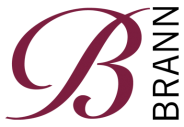Trademarks
The original and sole function of trademarks was as an instrument of differentiation. The registration of a trademark forms the legal basis for the scope of its protection. This can be of crucial importance to the future value of a trademark and should therefore be the object of careful consideration. We provide advice concerning the optimal scope of protection and carry out the official registration.
Distinguishing features
A trademark is a distinguishing feature intended to differentiate the goods and services of one manufacturer from those of another. The importance and value of a trademark increase as the range of similar goods and services available in society increases, and in line with the importance of image.
When time limited exclusive rights – such as design protection and patents – expire, the trademark, and the image linked to it, still remains; and in many sectors it becomes the most significant means of competition.
The trademark thus has functions other than indicating commercial origin. These include guarantee, a function, a quality or price level or a symbol of value. All these factors depend largely on how well the trademark is established and integrated into the consciousness of the market.
Types of trademark
There are four main types of trademark:
- The word mark – a word, for example, with links to the company or the product, a made-up word or a word that stimulates association with the product or service.
- The figure mark – the visual design of the mark, e.g. a logo (a word in a special shape that creates a figure) or a picture, a symbol, a label, letters or numbers that have been given a particular form.
- The combination mark – word and figure marks combined.
- The outfit mark – a specially designed packaging, a distinctive detail in or on the item itself.
Trademarks do not necessarily have to be descriptive of the products or give any indication of the nature of the products. Nor, generally speaking, can they take the form of a geographical or family name.
The creation of a good trademark demands a great deal of work, and should be done with great care as the trademark will normally have to be used for a very long time. Even when you have chosen a trademark, there is still much work to be done to have it protected on all the markets where you intend to use it.
A good trademark must be
- Easy to remember
- Distinctive
- Powerful
- Internationally useable
The scope of the protection
Trademarks should always be protected by registration. Simply relying on establishment rights is a risky approach and can prove expensive. Goods and services are divided into classes according to an international classification system, and the scope of protection of a trademark is thus defined completely by the class(es) chosen at the time of registration.
To increase the scope of protection of a registration – i.e. to add more classes subsequently – requires a new application.
How long does the protection last?
In Sweden and in most other countries, trademarks are registered for 10 years. The protection can then be renewed for additional 10-year periods – for as long as you want, in principle. In other words, for 10 years at a time, for ever. This makes trademark protection particularly valuable.
You can also have a trademark protected through establishment. This demands a combination of protracted use and widespread recognition of the trademark. It is a form of protection that can be just as strong as registered protection, but it comes with an appreciable degree of uncertainty.
The principal procedures for registering trademarks
National application
This involves registering trademarks nationally in each country by filing a national application with the national authority responsible for registering trademarks. In Sweden, the authority in question is the PRV.
EU Trademark
Since 1996, it has been possible to complete registration in all EU states by filing a single application. Such applications are to be filed with the EUIPO authority in Alicante, Spain, and the registrations then apply in all EU member states. Applications for EU trademarks do not automatically guarantee exclusive rights in all countries. Rights registered previously in each member state can present obstacles.
International application
International registration, i.e. applications that cover multiple countries, can also be filed pursuant to what is known as the Madrid Protocol. Unlike EU trademark applications, using this approach allows you to select the countries you wish to include in the application. These applications are administrated through the UN body WIPO in Geneva.
However, such applications still require a national trademark registration as their basis. This process does make it possible subsequently to add other countries to the registration, or even to remove some countries if problems have arisen, for example.
Looking after trademarks
Trademarks have to be used in a “trademark-like” manner in marketing and market communication. For example, there is a risk of the trademark degenerating, i.e. losing its distinguishing properties, or otherwise losing its capacity to communicate the intended associations. Our trademark specialists are happy to provide advice concerning the correct use of a trademark.
The ® symbol (for registered trademarks) and the ™ symbol (for non-registered trademarks) should be used consistently, and in their everyday use, trademarks should stand out from other words in texts and graphic presentations.
Trademarks can also age and require modernisation to suit contemporary typography and style ideals. Any such modernisation must be done with great care to ensure that the mark retains the positive associations it has built up on the market and among clients.
